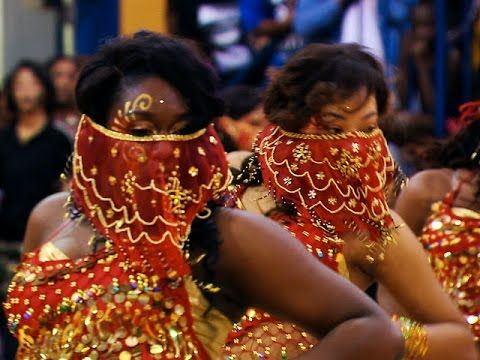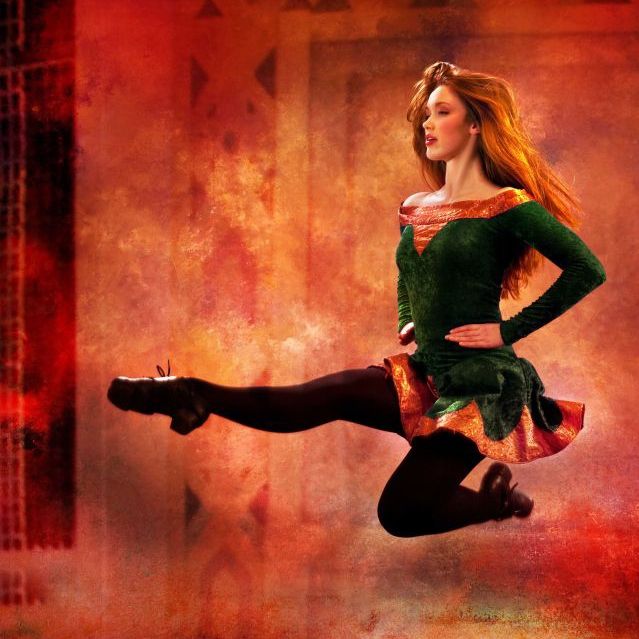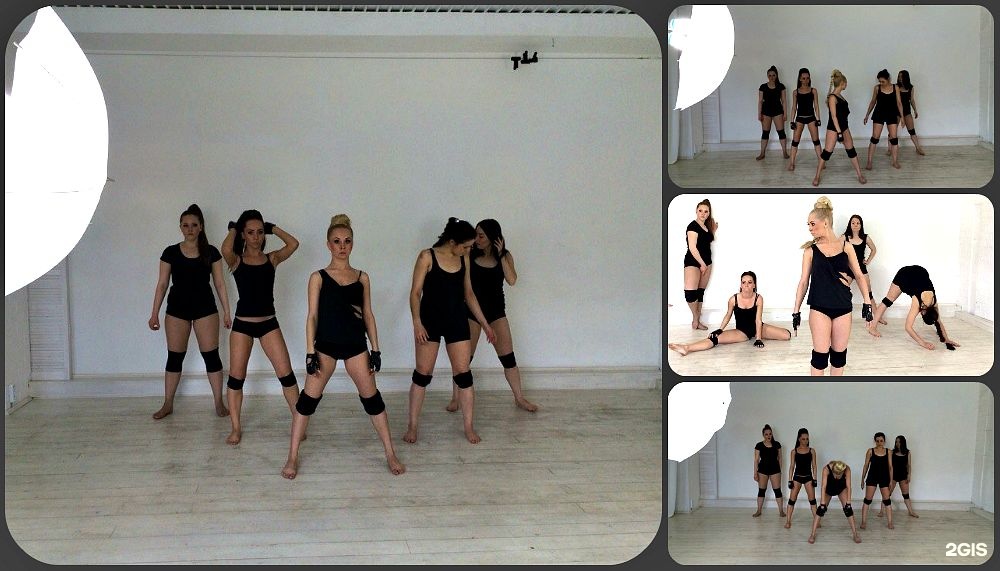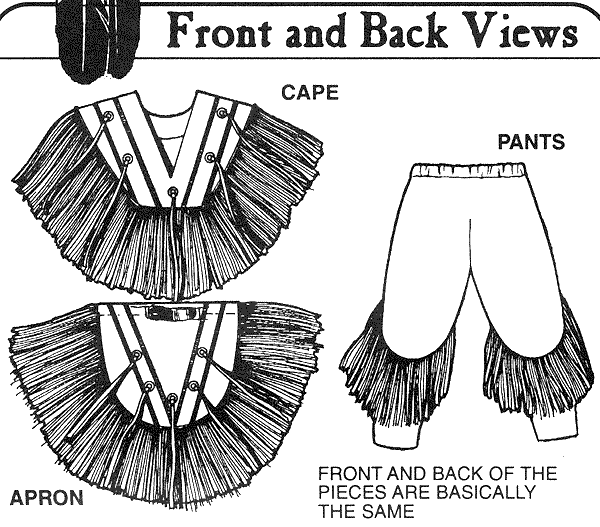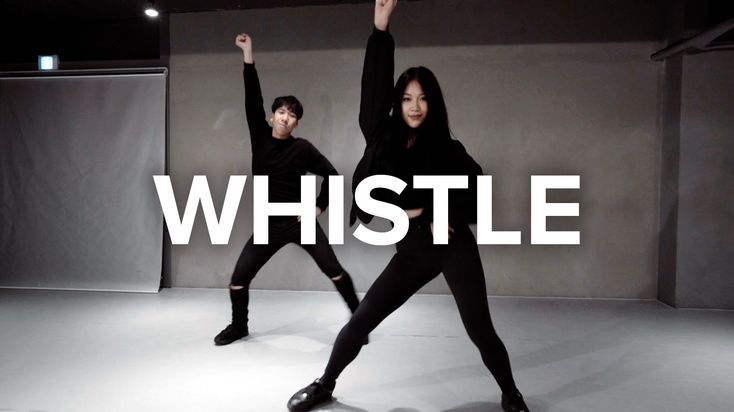How to do a backflip dance
Backflip – Country Swing AZ
Type Aerial, Flip
Level Advanced 7
Other Names Basic Flip
Comes From Open Position, Cuddle
Leads To Open Position, Airplane, Texas Star
Looking to learn flips in Country Swing? This is the easiest to learn and incorporate into your dancing. It will come in handy with some more advanced moves later too!
The backflip is exactly what it sounds like: the leader flips the follower into a backflip! It is one of the easiest flips to learn, and it lends itself to other cool aerials like The Airplane.
Warning: Use caution when performing any aerials or flips. Practice it before taking it out on the dance floor. Leads, always ask before performing a flip, and do not flip a follow who does not want to be flipped or know how. Ignoring these precautions can lead to injury.
It is also suggested that you call this move out when performing it, and practice with a spotter the first couple of times.
Leads
- From Cuddle with the follow on your right side, do a Spin Out to the right. To continue the momentum and put the follow into a hammer lock (arm behind their back), turn your wrist over. In a normal Spin Out your palm faces the front wall, in this overclocked Spin Out, you will turn it palm side down so it faces the back wall.
- With a very good hand lead, timing, familiarity with your partner, and momentum of the wrist you won’t have to communicate this step; but for the rest of us non-super human dancers, verbal direction can help your follow to keep going.

- At the end of this step, your follow’s forearm should be in the small of their lower back just above their butt.
- With a very good hand lead, timing, familiarity with your partner, and momentum of the wrist you won’t have to communicate this step; but for the rest of us non-super human dancers, verbal direction can help your follow to keep going.
- When the follow is next to your right side again, bend down. With the hand that is holding her in Hammerlock, briefly let go, then wrap your arm clear around her back with fingers wrapped forward. This arm will stay in contact with your follow the whole time. Again, this arm needs to be right above her butt in the small of her back. With your free arm, reach behind the follow’s thighs.
- You can grab behind the follow’s left knee, or both legs. Both is more stable and will keep the follow from cartwheeling out.
- You can wrap your fingertips around the follow’s thigh.
- Swiftly straighten your back and legs while you lift your lower arm (left arm) up. Once that arm is past your ear, you must let go. The rest of the move is supported on your right arm which is wrapped around the follow. Flip your right wrist palm side up through the turn for comfort, as your arm will be twisted.

- Bend your knees to absorb the impact of the follow landing. You may need to tilt your torso over a little to make the landing more comfortable on your right arm since it is twisted up.
Follows
- During the Spin Out, allow your left arm to flip around to Hammerlock position. If you bend your elbow you will have a much easier time. As you come around for the second turn, lift your left arm above his arm so it is not trapped below. This will also give you the option to put your left hand on his bicep for extra support.
- Or you can put both hands closer to his shoulder.
- Bend your knees for the jump, don’t do so until instructed by verbal or physical cue. The physical cue is when you feel the lead bend his knees. You may push off his arm/shoulder with your hands to help.
- Jump straight up into the flip. DO NOT dive backward into the dip. It will help to tuck your knees in and tighten your core.
- Bend your knees on the landing to absorb impact.
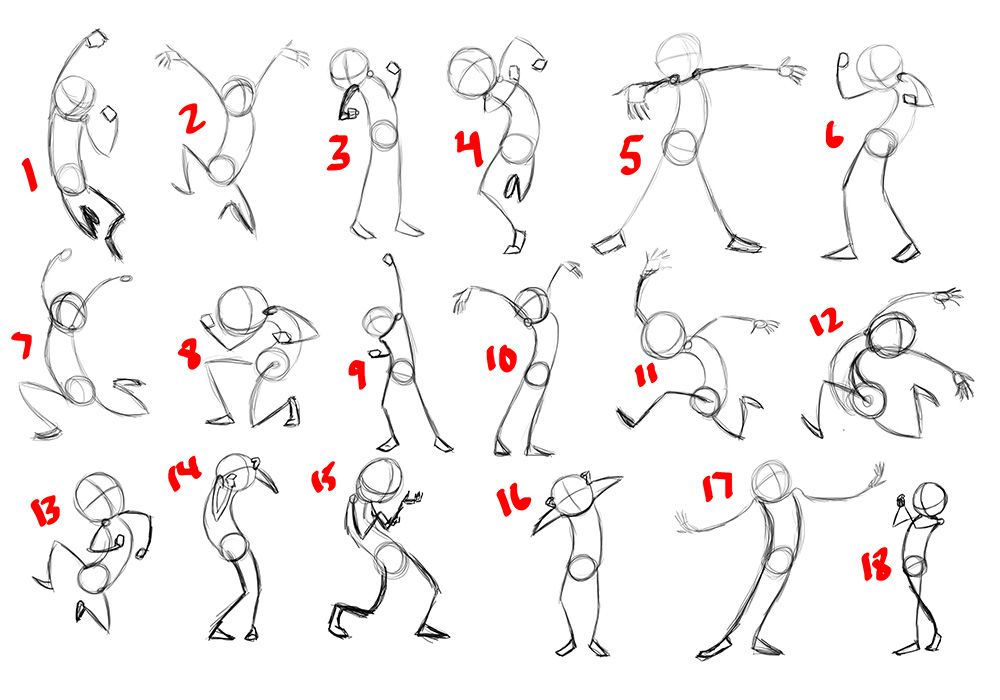 Try to land on both feet at the same time to minimize friction on your waist, but if you need to, you can plant one foot and then let the other come down.
Try to land on both feet at the same time to minimize friction on your waist, but if you need to, you can plant one foot and then let the other come down.
- Leads, the flip doesn’t happen at your right side, it actually happens in front of you, so your follow should land perpendicular to you.
- Some physically strong leads will strong-arm their way through this move without the follow having any clue what is going on. Again, I do recommend communicating with your partner beforehand. There are too many things that could go wrong that it’s not worth the risk.
- Leads, you can step behind the follow in preparation for the flip if that is more comfortable.
- Leads, by placing your own arm behind the follow’s back you give yourself more control over the move and prevent her from flailing. The arm goes in the small of her back above her butt, regardless of her height.
- Try not to keep the follow inverted for long. The second half of the move can cause abdominal injuries from added friction and pressure.

- You can count to three or shout “Now” for the cue to flip. To ensure good timing.
- Follow, adjust your jump to your height.
- Ideally, the lead is taller and stronger than the follow for this move to work. However, since this move is more about leverage and hand placement, virtually anyone can flip or be flipped with practice. A good deal of the move’s success depends on the follow jumping.
- You can also do this move from a regular Hammerlock. Lead, just remember to overclock the turn and step behind your follow. This variation is great for a follow who is new to this move because they don’t have to know to keep their right arm above, since you placed it there for them.
Like this:
Like Loading...
Most Viewed
Can Opener
Basic Rhythm Two-Step
Candlestick
Pretzel
Crossed Arm Slide
Lasso
Side Lean
Pull Up Dip
The Cuddle Lean
Hammerlock
Categories
- Information
- Level
- Level 1 Beginner
- Level 2 Beginner
- Level 3 Beginner
- Level 4 Intermediate
- Level 5 Intermediate
- Level 6 Intermediate
- Level 7 Advanced
- Type
- Aerial
- Circle
- Combo
- Dip
- Lean
- Lift
- Other
- Position
- Progressive
- Spin
- Step
- Transition Move
- Turn
Blog at WordPress.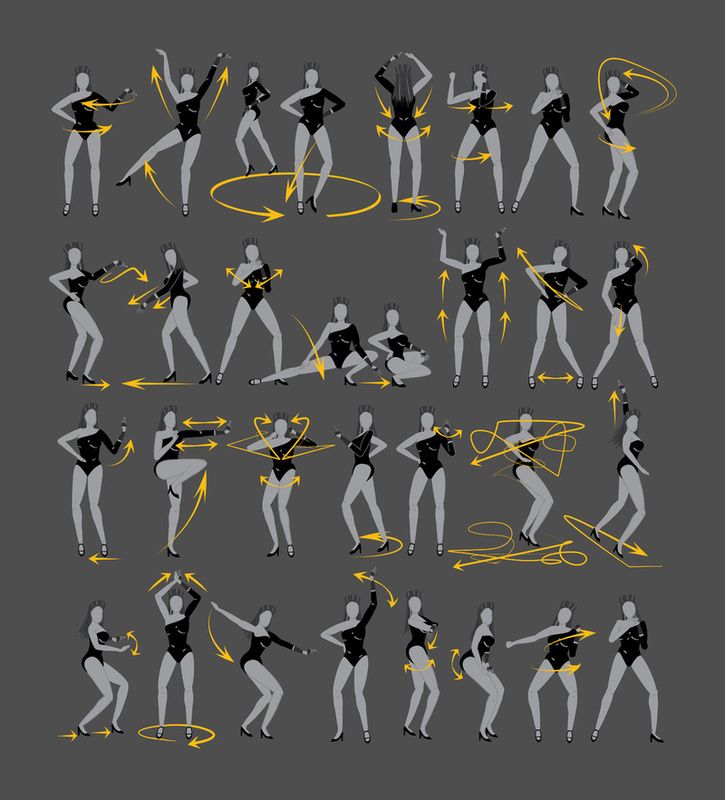 com.
com.
Breakdancer doing a back flip the man is dancing Vector Image
Breakdancer doing a back flip the man is dancing Vector Image- Royalty Free Vectors
- Backflip Vectors
LicenseLearn More
Standard You can use the vector for personal and commercial purposes. Expanded You can use the vector on items for resale and print-on-demand.The license type determines how you can use this image.
| Std. | Exp. | |
|---|---|---|
| Print / Editorial | ||
| Graphic Design | ||
| Web Design | ||
| Social Media | ||
| Edit & Modify | ||
| Multi-user | ||
| Resale Items | ||
| Print on Demand |
Ways to BuyCompare
Pay-per-Image $14. 99 Credits $1.00 Subscription $0.69
99 Credits $1.00 Subscription $0.69 There are three ways to pay for Standard licenses. Prices are $USD.
| Pay with | Image Price |
|---|---|
| Pay-per-Image $14.99 One-time payment | |
| Pre-paid Credits $1 Download images on-demand (1 credit = $1). Minimum purchase of 30. | |
Subscription Plan From 69¢ Choose a monthly plan. Unused downloads automatically roll into following month. | |
Ways to BuyCompare
Pay-per-Image $39.99 Credits $30.00There are two ways to pay for Expanded licenses. Prices are $USD.
| Pay with | Cost per Image |
|---|---|
| Pay-per-Image $39.99 One-off payment, no signup needed. | |
| Pre-paid Credits $30 Download images on-demand (1 credit = $1). | |
Extra ServicesLearn More
Customize image Only available with Pay-per-Image $85. 00
00 Love the image but just need a few modifications? Let our talented artists do the work for you!
We’ll connect you with a designer who can make updates and send you the artwork in a format of your choice.
Examples
- Change the text
- Modify colors
- Resize to new dimensions
- Include logo or symbol
- Add your company or business name
Files Included
Loading Details...
-
- Image ID
- 27220782
-
- Color Mode
- RGB
-
- Artist
- Oleksiy
How to learn to do back and forth somersaults
June 22, 2020 Likbez Sports and fitness
The most important thing is to get rid of fear and move with the right technique.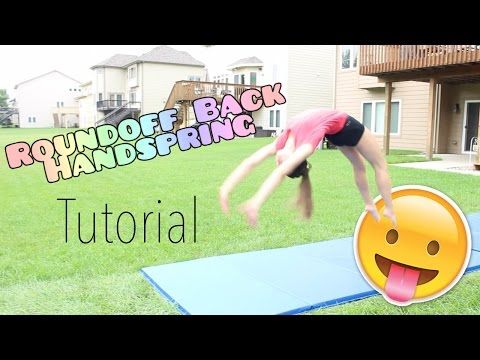
Iya Zorina
Author of Lifehacker, athlete, CCM
Things to remember before learning to do somersaults
Somersaults are an acrobatic exercise that requires good coordination and explosive leg strength. From the outside, it seems incredibly difficult, but any healthy person can master it.
We'll show you how to prepare your body, choose a safe place to train, and learn how to pull up. All this will strengthen your self-confidence, help you overcome fear and gradually learn a cool and spectacular element.
Lead-up exercises and the exercise itself can cause injury. Lifehacker is not responsible for what happens to you in the learning process.
How to prepare the body for front and back flips
If you do not play sports, you should first prepare your muscles for stress. Below we will tell you what exercises to perform in order to develop the strength necessary for the successful mastering of the front and back flips. Train for 1-2 weeks before you start pull-ups.
Train for 1-2 weeks before you start pull-ups.
If you are an athletic person and have good control over your body, you can develop your jump height and abdominal strength in parallel with mastering the lead-up exercises.
Jumps
A good jump is very important for performing somersaults. If you don't get off the ground high enough, you just won't have time to roll over and land on your feet. A little practice will help you develop explosive leg strength and jump higher. Do it three times a week with one rest day between sessions.
Before training, do a short warm-up: 20 Jumping Jacks and 30 seconds each of running in place and jumping on the move.
Then do 4 sets of 4-5 reps of each exercise. Rest 1.5-2 minutes between sets.
Pit jumping
Stand on a stable chair or pedestal about 30-50 cm high. Jump off it on both feet and immediately jump up to the maximum height.
Knee Jumps
Get on your knees, first bend your hips, and then with a sharp extension, push yourself up and land on your feet.
The point is to just jump off your knees, not get up on your toes and come out that way. The movement must be explosive and abrupt to get the feet off the floor before landing on it.
You can also complete this movement with high jump, long jump and side jump.
Jump to the maximum height
In this exercise, it is important to try your best in each repetition. Make a soft squat and jump up to the maximum height, as if trying to reach the ceiling.
Stretch your arms up - this movement will also be useful during somersaults. You can also take one or three steps before jumping.
Work on the abdominal muscles
Another important movement for somersaults is a quick twist of the body. And for this you need strong abdominal muscles. We will show some good exercises to strengthen them.
Do them every day: the abdominal muscles are very hardy and have time to rest during the day.
Bicycle
This is one of the most effective abdominal exercises.
Lie on your back, press your lower back to the floor and put your hands behind your head, lift your shoulder blades and legs off the floor. At the same time turn the body to the right, bend the right knee and pull it towards the left elbow.
Then reverse the position and continue in this way, alternating sides.
Perform three sets of 20 cycling reps with 30-60 seconds rest in between.
Crunches
Lie on the floor with your hands behind your head, bend your knees and press your feet into the floor. Tear off your shoulder blades and lower yourself back down.
Perform three sets of 20-30 reps with 30 seconds rest in between.
Leg Raise
This exercise works well on the lower part of the rectus abdominis and hip flexors.
Lie on your back with your arms by your sides, lift your legs and bend your knees at right angles. Lift the pelvis off the floor, pointing the legs up, and return it back.
Do three sets of 20-25 reps with 30 seconds rest in between.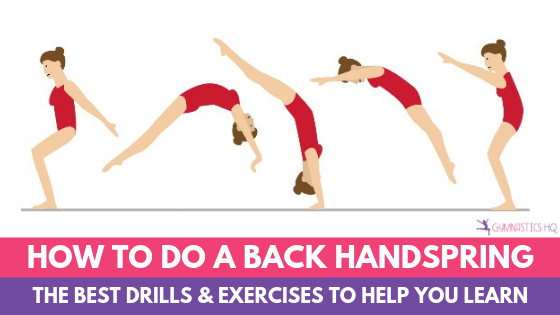
How to choose a place to study
You can train at home provided you have enough space and a thick mattress to put it on the floor. If that's not possible, find a gym that has thick gymnastics safety mats or a few thin mats that can be stacked on top of each other.
It is also worth visiting the trampoline center several times: a pit with foam cubes will help you overcome your fear.
It is better not to train with furniture, even if you weigh a little. I already have one broken section of the sofa on my account: do not repeat my mistakes.
After the trampoline center, I trained on the soft surface under the bouldering wall and on crashpads - small mats that are laid during outdoor trips. If your gym has a similar space, this might be a good option. Just ask in advance if you can jump there.
What lead-in exercises will help you learn how to do somersaults
First of all, you need to learn lead-in exercises. They will help overcome fear and lay the foundation for a technically correct movement.
Master all movements one by one. Move on to the next one as soon as the previous one starts to work well.
Birch roll
Stand in a birch, place your hands on your lower back, keeping your body upright. Then bring your legs down, round your back and roll onto your ass. When your feet are on the floor, make a fold by touching your feet with your hands and fix it for 2 seconds.
Tighten your abs and legs, keeping your back round. In this case, you can make a soft roll, and not flop on it.
Roll with tuck
Stand in a birch tree and extend your arms above your head. Bring your legs down, round your back and gently roll onto your ass.
At the moment when the buttocks touch the floor, bend your knees, swing forward with straight arms and come out in a crouching position. Grasp your knees with your hands, press your chin to your chest.
Forward roll
Get into a crouched position, stretch your arms forward and press your chin to your chest. Push off with your feet, transfer your body weight to your shoulders and make a smooth roll, as in the previous exercise.
Push off with your feet, transfer your body weight to your shoulders and make a smooth roll, as in the previous exercise.
At the end, wrap your arms around your knees, keeping your chin pressed to your chest.
Squat Somersault
This exercise is to be performed on safety mats. And, if possible, with a partner.
Stand in front of the mats with your feet together, arms extended up and chin to chest. Then slightly move the pelvis back, make a shallow squat and round the lower back.
Have your partner place one hand on your stomach and the other hand on your upper back and give you direction to spin. If you do not have a person who will insure you, it's okay, do it without him.
Jump up from the starting position, simultaneously twisting the body forward. Touch the mat with your hands, roll over your round back and come out crouching point-blank with your hands around your knees.
Front somersault from a place on the buttocks
This is the last lead-in exercise, during which you will almost do a front somersault, only you will land on your buttocks instead of your feet.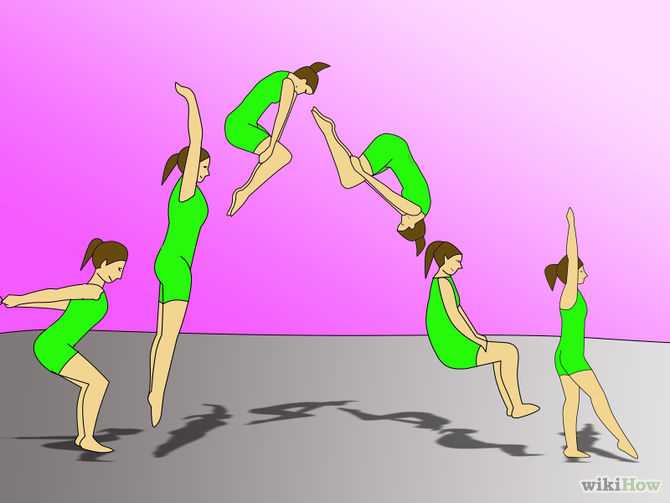
Starting position is the same as the previous one: arms up, chin pressed to chest, pelvis pulled back.
After the jump, make a powerful swing with your arms, helping yourself to twist, and grab your knees. At the same time, be sure to spread your legs slightly to the sides. If you keep your knees together, you can hit your face hard when you land. Keeping your chin close to your chest will help you spin nicely and land on your butt rather than your back.
When you have mastered this movement, you can move on to a real front flip.
How to perform a front flip correctly
- Stand about two wide steps from the mats, extend your arms above your head, as in the initial position in the approach exercises.
- Take a big step forward and then jump on two feet in front of the mats. This is necessary to gain momentum and rise higher. Therefore, it is important that the feet land on the balls and are slightly in front of the body.
- Jump up and twist your body with a powerful swing of your arms and tucking your chin into your chest.

- Rolling in tuck pose, land on your feet. Leave your arms extended forward.
Mistakes to avoid when performing a front flip
Inaccuracies in technique will prevent you from doing somersaults or make them much more energy-intensive and dangerous. Therefore, often ask to film your movements on video and track your mistakes.
Incorrect or weak arm movement
Arms help you twist your body. Without a powerful circle movement, you will not be able to spin quickly and you will simply fall on your back or buttocks.
Hanging in the air before spinning
Start spinning immediately after jumping up. If you hover in the air, you will not have time to scroll.
Separate Arms and Core
If you start with your arms only and then engage your core and bend your knees, the rotation is not as fast or powerful. In order not to lose momentum, immediately work with both hands and body after the jump.
Loss of rigidity of the body before the jump
Your whole body should be like a cocked spring.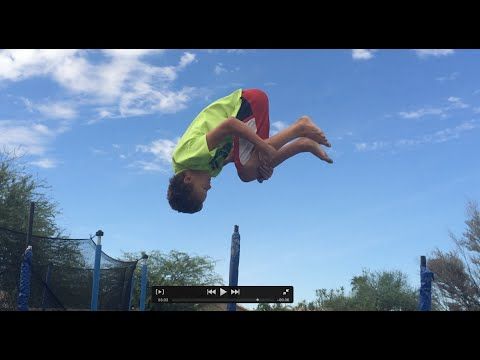 If you relax your back at the moment of the jump, the stomach will come forward, you will lose momentum and you will not be able to push off and spin well enough.
If you relax your back at the moment of the jump, the stomach will come forward, you will lose momentum and you will not be able to push off and spin well enough.
Leading exercises to help you learn how to do a back flip
Some people think that doing a back flip is easier than doing a front flip. The movement itself is really easier because you are spinning with your legs and you don't have to do such a strong swing with your arms and such a high jump.
But at the same time, many people experience severe psychological discomfort when jumping backwards, which can greatly slow down learning and make it much more difficult. Be that as it may, the lead-up exercises will help you overcome fear and master the back flip.
For some exercises you will need a gym cube. You can experiment with the available equipment to make it. For example, stacking a lot of thin mats or crashpads on top of each other.
If this is not possible, do the first three lead-up exercises, and then find two reliable people and try to perform a back flip with insurance. We will explain how to do this in the next chapter.
We will explain how to do this in the next chapter.
Back Flip
This skill is useful for twisting quickly in the air during somersaults.
Lower yourself into a crouch, place your hands on the floor and transfer your body weight onto them. From this position, push off with your hands and, pressing your knees to your shoulders, perform a somersault back. When you pass over the head, the palms are placed on either side of it, so that the weight of the body is distributed between the hands, and does not fall on the neck.
Keep your back round and your abs tight during the roll. Spread your knees to the sides and press to your shoulders. It is important to develop such a habit so that during somersaults you do not hit your face on your knees.
Lying Knee Swing on the Floor
This exercise trains the correct sequence of movements in somersaults.
Lie on the floor, straighten your legs and stretch your arms along your body. Raise your straight arms and move them behind your head.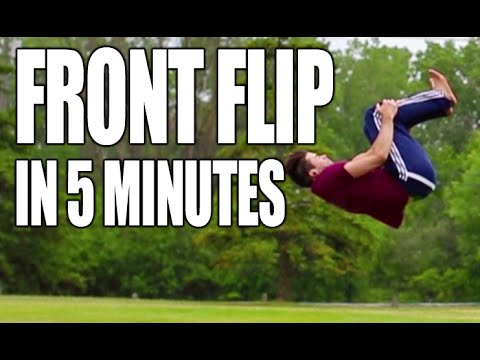 When the palms are above the shoulders, begin to pull the bent knees to the chest.
When the palms are above the shoulders, begin to pull the bent knees to the chest.
Press your heels into your buttocks, lift your pelvis off the floor at the end of the movement. Hold in a fully twisted position for 2 seconds and come back.
Jump up with arms swing
Stand up straight with your feet together. Bring straight arms back and do a shallow squat with a straight back, look forward.
Swing your arms forward and jump up to maximum height. The legs begin to straighten at the moment when the arms reach parallel with the floor. At the top of the jump, the arms and legs should be fully extended. Bend your knees gently as you land, keeping your arms up.
Rolling down
This exercise will help practice landing.
Lie on a raised platform with your body in a flat horizontal position and your head hanging down. Swing your arms, pull your knees up to your chest and roll back, landing on slightly bent legs. Leave your hands in front of your body.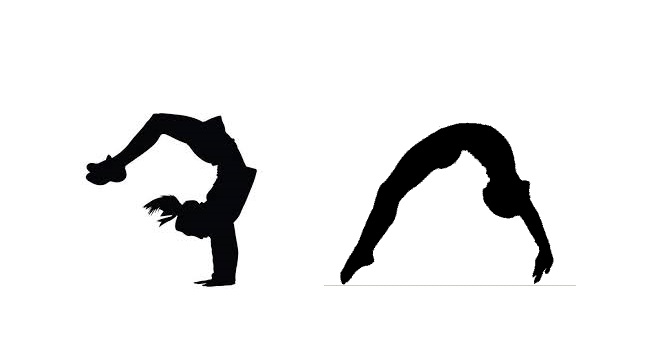
You can do this exercise with a partner - ask during the somersault to support you by the legs under the knees.
Jump up on the cube
Stand with your back to the gymnastic cube, take one small step away from it. Squat down with a straight back and bring your arms back. In this position, your fingers should touch the cube.
Swing with straight arms and jump up as in a lead-up exercise. By swinging your arms behind your head, your body will go back and land on the edge of the cube.
Rolling Cube Jump
This exercise will teach you how to spin after jumping.
Stand with your back to the cube, as in the previous exercise, and in the same way jump as high as possible with a swing of your arms. At the top, bend your knees and press them to your shoulders, twisting your body. Roll back on the cube and finish the movement in a crouched position.
When this movement works well, try the next option - put the cube across.
After the back roll, you will now roll off the cube and land on your feet.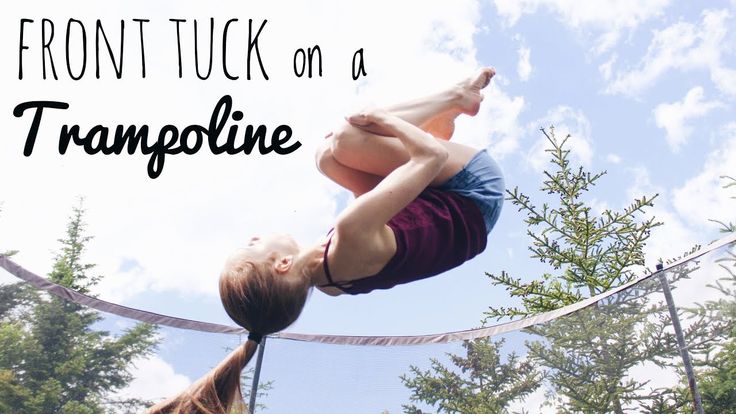 This is almost a finished somersault.
This is almost a finished somersault.
How to do a back flip with a belay
If you find two reliable and strong people to belay, your first back somersault will be practically safe.
You will need a strong belt for this belay. Tie it tightly like in the video below.
Ask assistants to grasp the belt from both sides. To see if the spotters can support your body weight, do a few test jumps.
If the assistants were able to keep you at the top of the jump and inverted, you will not fall during the somersault.
Stand on the edge of the mat with your back to the main body. Assistants should take hold of the belt from both sides and, turning their hands, accompany your rotation.
The one on your right should grab the belt with your right hand with a reverse grip, the one on your left with your left hand with a reverse grip. If the person on the right is also supporting your legs to help you twist, he can grab the belt with his left hand in an overhand grip.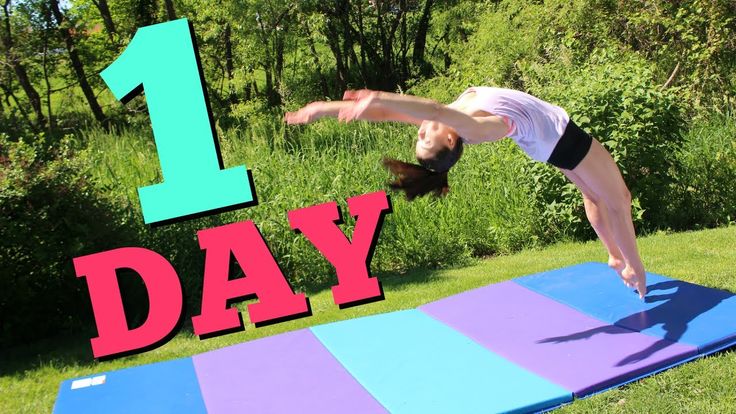
Over time, as you get used to the movement and land on your feet each time, spotters may loosen their grip on the belt and only hold you lightly without helping you jump out and spin.
Then you can perform the movement without support from the belt and with one spotter. During somersaults, a person will hold you behind your back in the area of the shoulder blades and help you rotate with the other hand.
When you get used to this movement, you can try somersaults without support.
How to do a back flip with proper technique
Put your feet together, squat down with a straight back and bring your arms straight back. Don't squat deep or lean too far forward, all of which will prevent you from jumping straight up.
Make a powerful jump up while swinging straight arms. At the top point, sharply pull your knees to your shoulders, as in the lead-in exercises. Keep your knees out to the sides so you don't hit your face on a bad landing.
After the twist, straighten your legs and land on half-bent knees.
Mistakes to avoid when performing a back flip
At first it is very important not to fix the wrong technique - later it will be difficult to get rid of habitual movements.
Jumping backwards instead of up
If you jump backwards instead of up, you lose jump height. In this case, you may not have enough time to spin and you will land on your feet much lower.
So jump up and only then start spinning.
Poor tuck in flight
Bad tuck takes speed away from rotation. As a result, you will have less time to complete the twist and land on your feet.
Chin Tucked
Unlike the front flip where you have to tuck your chin in to get a good spin, in reverse this position stops the rotation and can cause you to fall.
How to quickly master somersaults
If you have a good physical condition and you are not afraid to perform acrobatic elements, it may take a couple of days to master all the lead-up exercises and perform your first somersault.
Those who are not so well in control of their bodies or who can hardly overcome the fear of movement will need much more time - from several weeks to months.
In any case, do not despair. Practice as often as possible, film yourself in slow-mo, track down mistakes and correct them before inaccuracies in technique become a habit.
Read also 🤸♂️🏋️♀️🧘
- How to learn to stand and walk on your hands
- How to learn to pull yourself up
- How to learn to dance shuffle
- Learn to twerk
- Learn to juggle
*Meta Platforms Inc. and its social networks Facebook and Instagram are prohibited in the territory of the Russian Federation.
Best deals
15 Christmas decorations for home and Christmas tree
Profitable: Braun trimmer with a 48% discount
Best deals of the week: discounts from AliExpress, Lamoda, L'Etoile and other stores
8 watch models
Price of the Day: Nintendo Switch game console for 18,891 rubles
Basic and more: 16 discounted warm hoodies
0003
Great deal: Columbia winter jacket 24% off
How to learn to do back and forth flips on a trampoline?
Save yourself so you don't lose:
- Theory
- Pretreatment
- Safety
- Performing a front flip
- Performing a back flip
Having mastered trampolining, many users of this sports equipment begin to think about moving on to performing tricks. And the first thing that comes to mind, of course, is somersault. Indeed, the element is incredibly effective. However, in order to master it, you must first carefully study the execution technique and safety rules. This is what our article is about. Below we describe how to do somersaults on a trampoline back and forth. These are two completely different elements with their own nuances. If you also dream of learning how to do somersaults on a trampoline, then be sure to check out our tips.
And the first thing that comes to mind, of course, is somersault. Indeed, the element is incredibly effective. However, in order to master it, you must first carefully study the execution technique and safety rules. This is what our article is about. Below we describe how to do somersaults on a trampoline back and forth. These are two completely different elements with their own nuances. If you also dream of learning how to do somersaults on a trampoline, then be sure to check out our tips.
A bit of theory
Where without her! Let's quickly go over the main theoretical points in order to immediately dot the i's.
From Italian, the word "somersault" is translated as "jump". This is a basic element in sports acrobatics. A somersault involves moving at least 360° (possibly more) from a standing position over the head and then landing on the feet. In other words, a coup over the head.
In general, there are quite a few types of somersaults. But we will focus only on the two most popular variations - front and back somersaults.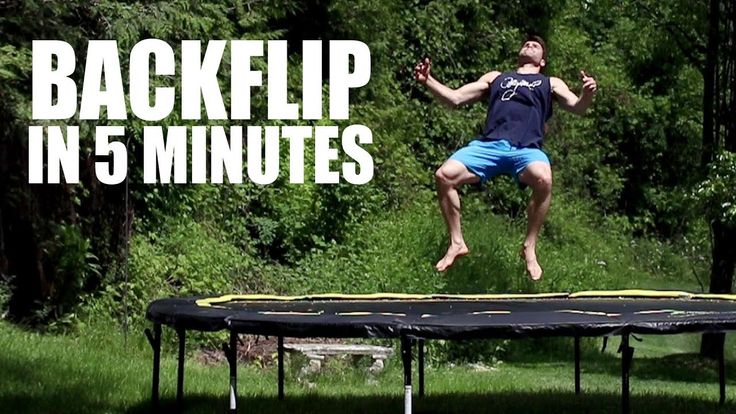
Preconditioning
If you are far from sports and have previously paid little attention to your physical form, then keep in mind that, most likely, tricks on a trampoline will be quite difficult for you. Therefore, it is better to start by preparing your body for these difficult elements. Your best friends are ordinary jumping rope. This is a great way to develop endurance, coordination and agility, as well as, if necessary, get rid of a couple of extra pounds. Train and long jump from a place. But most importantly, practice somersaults.
About safety
Subject to safety rules and the correct technique, somersaults on a trampoline can give amazing sensations of flight. However, it is worth remembering that this element is among the traumatic. And it’s good if the consequences of an unsuccessful trick are limited only to your fear or, for example, a bruise. This is clearly better than sprains, dislocations, fractures, displacements and other serious injuries.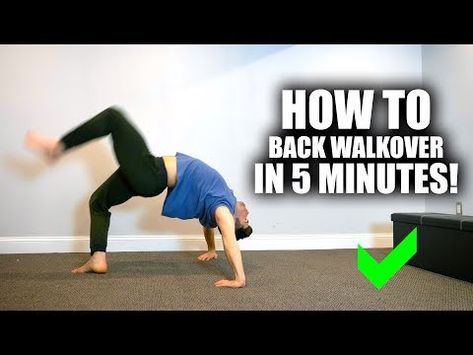
Therefore, we strongly recommend: before performing somersaults, study the safety rules. There aren't many of them.
-
Never try to do somersaults (and never use a trampoline at all) in a state of altered consciousness. For example, being intoxicated. Even if it seems to you that you are perfectly in control of your every movement. Alcohol greatly slows down the rate of the reaction. And this is extremely important when performing somersaults.
-
Make sure you have enough space on the trampoline. So that there are no other people, pets, foreign objects nearby.
-
You need to be engaged on a trampoline in comfortable clothes that do not hinder movement, do not distract. Shoes should also be comfortable.
-
Empty your pockets first. Otherwise, their contents may scatter in different directions when you perform the elements, injure you or be damaged.
-
If you feel tired or in pain, postpone your trampoline until the next time.

-
Try to curb your fear. Remember, it only slows you down. At a key moment, fear can shackle you and prevent you from performing the element the way you want.
-
As well as during training, and during further classes, do not train alone, but in a company. Of course, ideally - under the supervision of a coach. If this is not possible, then ask someone from the household or friends to be present at your classes. What for? If it suddenly happens that you still get injured, there will be someone to help you. For example, provide first aid, call a doctor, etc.
-
Before you start doing somersaults, be sure to warm up your body. You need to warm up your muscles. The minimum set of exercises is squats, ankle rotations, body rotations, tilts, rotations in the shoulder girdle, arm swings. You should feel how your legs and arms are involved in the work, your back has become more flexible.
Front flip technique
- To prepare mentally and physically for performing a somersault, master the basic exercises - a jump landing on your knees, a jump landing on your buttocks, a jump landing on your stomach.

- Another necessary element is a somersault on a trampoline. Remember how you tumbled on the floor as a child and try to repeat this movement as deftly and smoothly as possible.
- We complicate the element - we learn to somersault without the help of hands with a landing on the back. By accelerating the movement, you will be able to land already on the buttocks. Watch the synchronous work of the limbs. When pushing off with your feet, do not forget to make a good swing with your hands.
- Finished the move? Then it's time to move on to the somersault itself. Try to jump higher, better group and landing, stand on your feet.
Avoid these common mistakes:
-
Falling of the body to the side;
-
Tilt the head back;
-
Insufficient grouping;
-
Crossing legs in a group;
-
Information knees in a jump;
-
Relaxing the legs before landing;
-
Late or early arm swing;
Back flip technique
Also start by mastering a regular roll back to your feet.



